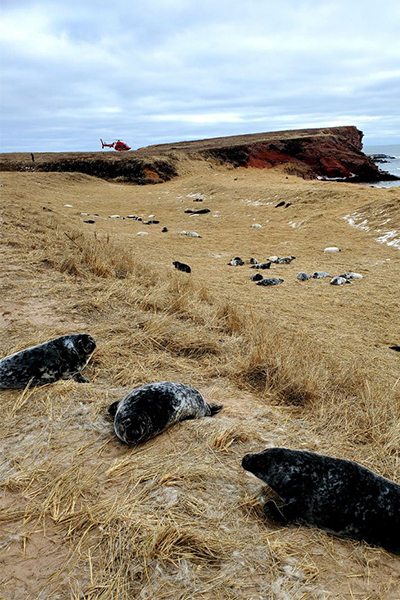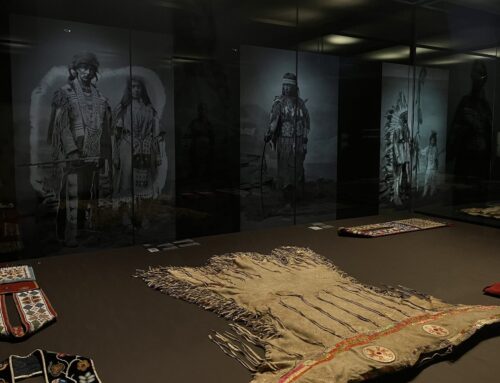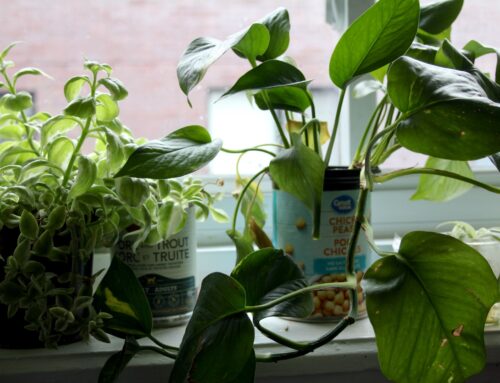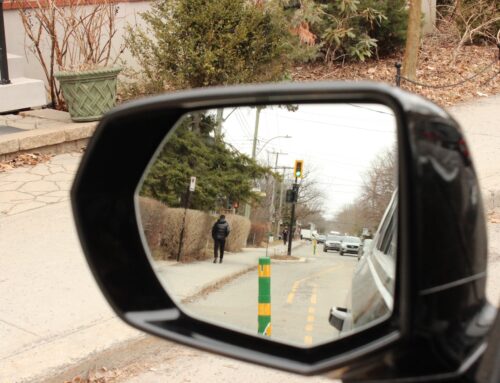BY Camille Miousse
It’s 7:30 a.m at the Cap-aux-Meules docks. Eight seal hunters geared up, followed by 11 government specialists ready to sail towards the first hunt of the season at the natural preserve on Île Brion.
It was a beautiful day, according to Jonathan Vigneau, the president of the Advisory Committee on Indigenous Peoples and one of the hunters that set foot on the Islands.
Hunters in Northern Quebec are fighting to get what they feel is rightfully theirs. They want to be allowed to hunt at the place they call home. They want their children to be able to do the same.
They want change.
Strolling on the thin ice and sailing in the cold salty air of a sunny winter day, a lot has changed over the years for the seal hunters yet everything remains the same.

Jonathan Vigneau and his crew sailing away from Magdalen Islands at sunrise for the hunting season. Photo by Jonathan Vigneau.
After lengthy procedures and demands, a premiere scientific hunt took place on Île Brion.
“There were more seals than we needed,” Vigneau says. In spite of his young age, the 26-year-old has been hunting for almost 12 years.
Five hunters set foot on the Island and around 1:30 p.m. they had their objective—a quota of 160 seals.
Three fishing agents, two helicopters and several searchers were watching the five hunters to supervise and write a report about the impact of the hunt on the natural reserve.
While the scientific observation gives hope to the hunters for their rights to hunt close to home, it is still a slow journey for them to reclaim their rights.
“Seal hunting is part of a cycle of wild resources utilisation, just like fishing. Most of the hunters are fishermen and for them, it’s just another season,” says Gil Thériault, the director of l’Association des chasseurs de phoque intra-Québec. “If we go back in time, maybe two or three generations ago, people would live in smaller and more diversified seasons, they would fish mackerels, herrings, cod and more. Today, it has changed. They have specialized and partly because of the fish’s disappearance in the Gulf.”
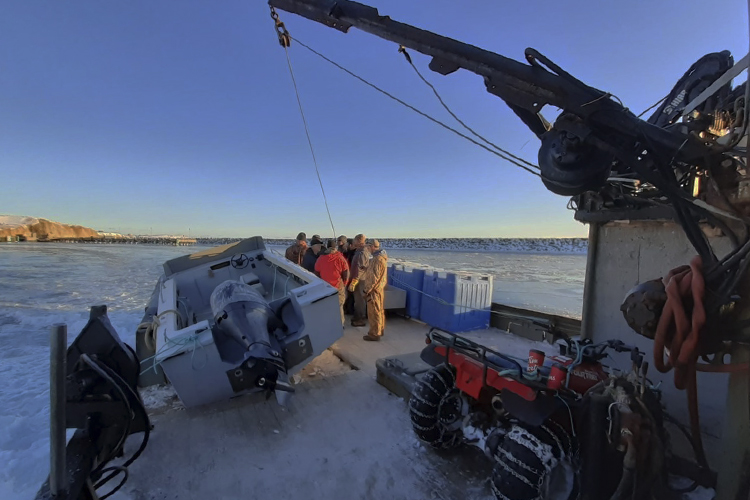
Hunters standing outside on the boat deck while they were getting closer to the Cap-aux-Meules docks at the end of the day in 2020. Photo by Jacques Leblanc.
Isolation has created a tight-knit community, which holds its traditional work close to its heart. However, a crucial part of the practice in the community is simply maintaining the balance. Without hunting, the seal population keeps increasing, harming the fish stocks that are vanishing quickly.
“Overfishing is a factor, yes, but there’s a predation that is too strong and it is the one of the seals. Seal hunting is not only a desirable industry in Magdalen Islands, it’s one that is necessary since it maintains the marine ecosystem,” says Thériault, who has been working in the business for 10 years now.
To keep that balance and allow other industries like fishing to flourish on the Islands, seal hunting will have to make a strong comeback.
Hunters are collectively working on new paths to make the practice more resilient. Until 2008, the focus of the hunt was the fur industry. Today, hunters are adding a modern twist. They are avoiding waste by offering a complete transformation, using the meat, the oils, the fur and the teeth.
“At the Boucherie, we have 365 days of productions of seal products. It’s not only during the tourist season. We ship charcuteries all over the province all year long. The products are appreciated and whatever the supply we get from the hunt each year, our business is always able to get by and produce.” says Rejean Vigneau, the owner of La Boucherie Cote-a-Cote that is producing niche seal products.
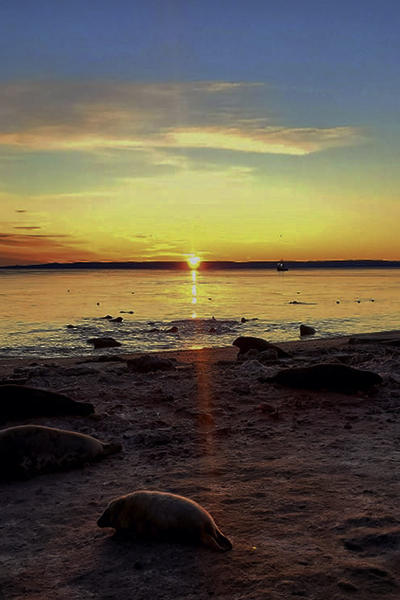
Jonathan Vigneau and his crew’s harvest on the coast of Newfoundland at sunset in 2020. Photo by Jonathan Vigneau.
Only, maintaining the balance through hunting and respectfully making a living out of traditional practices is still a controversial subject due to its complexity and negative portrayal in the media. Skeptics wonder if it’s necessary to kill. There is no short and immediate answer to that question.
“Seal hunting has a bad reputation in the media due to the lack of consistency and our ancestral method to kill. We found that it was the best and painless way to do it. We have to talk about it so people understand,” says Rejean Vigneau.
For the experienced hunter and entrepreneur, to make a real change, the Ministry of the Environment would have to support the hunt instead of being on the defensive. It would have to be a social acceptance all together.
“It really sticks in our imagination, a lot of people hold on to those images and to the beauty of the animal. They look so innocent and then the human comes and the snow is painted with red, it’s quite a cinematographic symbol,” Thériault says.
Hunters fail to understand the controversy. No easy answers can be authentic to the practice that has been around for centuries. Magdalen Islands hunters are asking to be heard and claiming their territory back: Île-Brion.

A map of Magdalen Islands and Ile Brion introducing the trajectory of the scientific hunt.
The wild, untouched and mostly abandoned natural reserve Île Brion, floating 16 km away from the main Islands, became over the years a home for the seal population to lay on the coast and the beach. Once inhabited by a few families, Île-Brion is now a ghost Island and place of diverse wildlife. To protect the territory from a hydro-carbide project discussed in the 1990s, the Islands became a natural reserve, restricting any contact with the land.
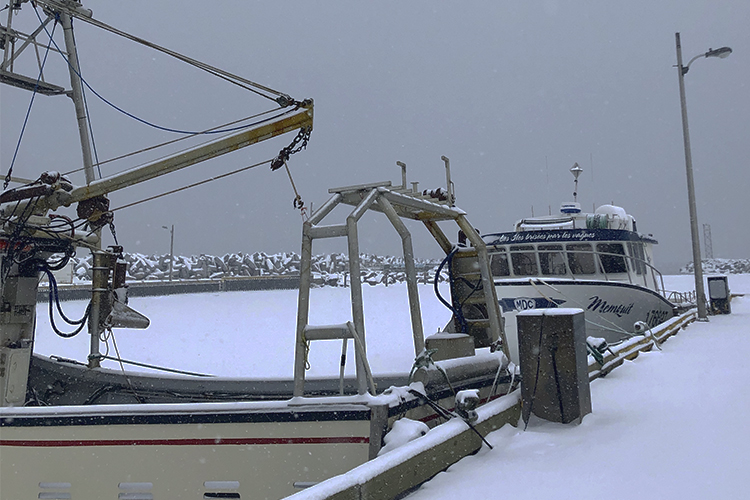
Boats frozen and crumbling under the snow at the Pointe-Basse docks after several days of cold the first week of February. Photo by Camille Miousse.
The Ministry of the Environment will send a report about the scientific hunt that took place at the beginning of the month including their observation and the impacts on the environment after the hunter’s visit to the natural reserve. The community is impatient to get some answers after all these years of asking to be heard.
“We can only wait now,” says Rejean Vigneau.

